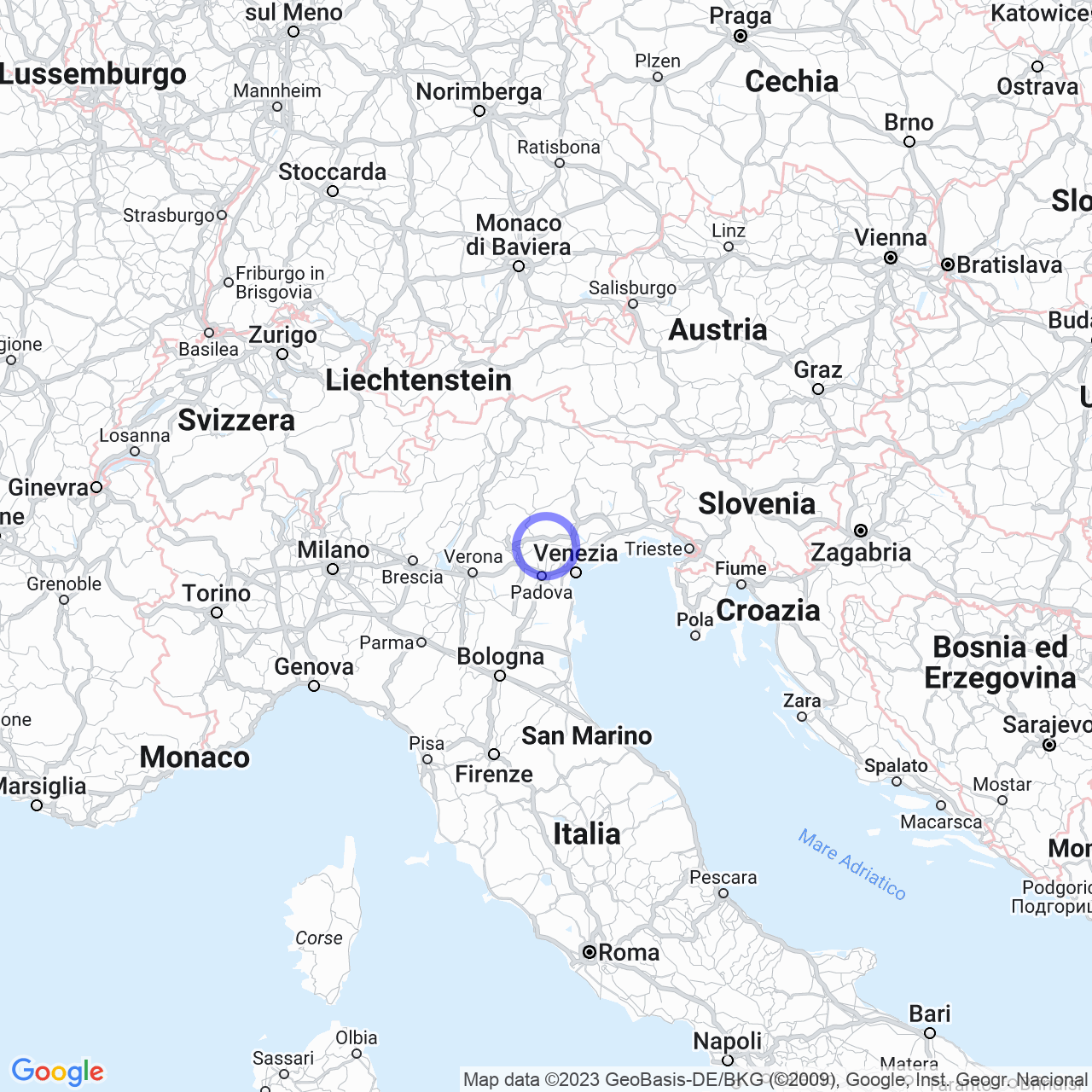Castelfranco Veneto
Castelfranco Veneto: A Walled City with a Rich Artistic Heritage
Castelfranco Veneto is an Italian municipality in the province of Treviso in Veneto with a population of approximately 32,972 inhabitants. It is the third largest municipality in the province after the capital, Treviso, and Conegliano. The city is centrally located between the Venetian capitals of Treviso, Padua, and Vicenza and is a walled city with a well-preserved medieval castle. But Castelfranco Veneto is also known as the birthplace of the famous Renaissance artist Giorgione, whose work is exhibited in some of the world's most prominent art galleries.
Territory
The municipality of Castelfranco Veneto is located on a flat area in the westernmost part of the province of Treviso, near the border with the province of Padua. It is in a privileged and well-connected position to easily reach the four provincial capitals (Treviso, Venice, Vicenza, and Padua), as well as other important cities like Bassano del Grappa, Cittadella, and Montebelluna.
The city is surrounded by the main river Musone, but other waterways flow through the municipality such as Avenale, Musoncello, Musonello, and Muson Vecchio.

Climate
The climate of Castelfranco Veneto is mild and temperate with frequent rains throughout the year. Summer temperatures are hot and humid, while winter temperatures are cold but never extreme.
Origins and Toponym
The city of Castelfranco Veneto was founded between 1195 and 1199 as a border outpost between the rival cities of Padua and Vicenza in an area where the Musone River represented the only ephemeral natural demarcation. The territory of Castelfranco Veneto was chosen because of its strategic location between the lordly strongholds of Castello di Godego and Treville, and the episcopal ones of Salvatronda, Riese Pio X, and Resana.
Work was directed by Count Schenella di Collalto, who employed approximately 500 master masons and a thousand "guastatori." Within a decade, the castle's construction was completed, including the moat around the walls, into which the waters of two Muson's tributaries were diverted: Avenale and Musonello.
Art and Culture
The city is famous as the birthplace of the Renaissance artist Giorgione. Today, it is possible to visit his historical residence, Casa Giorgione, where a collection of artwork, photographs, and documents showcasing his talent and life can be admired.
Another characteristic stop is the Cathedral of Castelfranco Veneto, which houses one of Giorgione's most famous works, the Pala di Castelfranco. The chapel housing the artwork has recently been restored, allowing visitors and tourists to admire the artwork in all its splendor.
The historic center of Castelfranco Veneto is characterized by the presence of well-preserved walls and ramparts, which have recently been restored and made more accessible to visitors. The pedestrian streets within the walled city are particularly attractive to visit, offering the opportunity to discover the artistic and cultural heritage of Castelfranco Veneto.
Economy and Commerce
Castelfranco Veneto is an important commercial and industrial center of Veneto. The main economic activities in the city are textile production and processing, agriculture, tourism, and commerce.
The city is also the site of significant cultural and artistic events throughout the year, such as the International Festival of Ancient Music and the Carnival of Castelfranco Veneto.
Conclusions
Castelfranco Veneto is a city rich in history, art, and culture. With its central location and strong economy, it is a strategic place to visit some of the most important cities in Veneto. The beauty of its walls and historic center, and the fame of its most illustrious artist, Giorgione, continue to attract visitors and tourists from all over the world.
